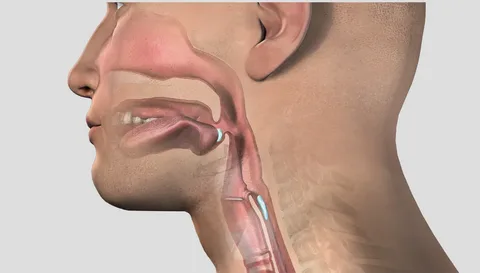Dysphagia, also known as swallowing difficulties, can affect people of all ages from infants to older adults. It occurs due to various medical conditions that can affect the muscles and nerves involved in swallowing. This article discusses in detail about different aspects of dysphagia, including causes, symptoms, diagnosis and treatment approaches.
Causes of Dysphagia
There are numerous potential causes for Dysphagia Management which depends on which part of the swallowing process gets affected. Some of the common causes include neurological diseases like stroke, Parkinson’s disease or motor neuron diseases which can impact the nerves controlling swallowing muscles. Head and neck cancers treated with radiation or surgery often damage the swallowing mechanisms. Other conditions such as gastroesophageal reflux disease (GERD), achalasia, epiglottitis or eosinophilic esophagitis can also contribute to dysphagia. In infants and young children, dysphagia may be caused due to prematurity, respiratory problems or neurological disorders such as cerebral palsy. In older adults, it is commonly seen with conditions like dementia. Dysphagia is also a side effect of some medications.
Symptoms of Dysphagia
The symptoms of dysphagia vary depending on the severity and cause but some common ones include: difficulty swallowing certain foods or liquids, coughing or choking during or after swallowing, sense of food getting stuck in the throat or chest, holding food in the mouth for a long time before swallowing, weight loss due to inadequate intake and pneumonia due to aspiration. In infants and children, symptoms include nasal regurgitation of milk, coughing or choking with feeding, excessive drooling and refusal to eat.
Diagnosis of Dysphagia
A thorough medical history and physical examination helps identify potential causes of dysphagia. Diagnostic testing may include:
– Videofluoroscopic Swallow Study (Modified Barium Swallow): It allows real time x-ray imaging of swallowing and helps evaluate various phases and structures involved including oral, pharyngeal and esophageal phases of swallowing.
– Fiberoptic Endoscopic Evaluation of Swallowing (FEES): In this test, a flexible tube with a camera is passed through the nose/mouth and down the throat to directly examine swallowing.
– Esophagram (Barium Swallow): It uses barium and x-rays to examine the esophagus and check for any anatomical abnormalities.
– Manometry: It measures pressure within the esophagus during swallowing using a catheter to determine problems like achalasia.
– pH monitoring: It is done to detect abnormal backing up of stomach acid into the esophagus in conditions like GERD.
Treatment of Dysphagia
The treatment goal focuses on making swallowing safer and easier. It depends on the underlying cause and severity of dysphagia. Some common approaches include:
Diet and Postural Changes
For mild to moderate dysphagia, making dietary and postural changes during meals can help. Thicker, pureed or softened foods and liquids may be easier to swallow. Proper positioning by sitting upright at a 90-degree angle and small bites or sips also aids swallowing.
Swallowing Therapy Exercises
Speechie or swallowing therapists teach patients various exercises to strengthen the swallowing muscles and improve coordination. Range of motion exercises for the oral cavity, thermal-tactile stimulation and effortful swallow are some techniques used.
Medications
For certain underlying causes like GERD or achalasia, medications are given to reduce stomach acid or relax muscles in the esophagus to relieve swallowing difficulty.
Procedures
In severe cases, endoscopic procedures may be done to widen a narrowed esophagus via balloon dilation or expand a tightened lower esophageal sphincter via botulinum toxin injection. Surgery is an option for swallowing problems due to structural problems.
Feeding Tube Placement
For patients unable to meet nutrition orally, temporary or long-term feeding tubes can provide nutrition directly into stomach or small intestine via a tube placed through the nose, mouth or abdomen.
Dysphagia is a common condition requiring a multidisciplinary approach for proper diagnosis and management. Making appropriate dietary and postural changes along with swallowing exercises and medications or procedures help to improve swallowing safety and function based on individual conditions. With treatment, dysphagia can be effectively managed in most people.
*Note:
1. Source: Coherent Market Insights, Public sources, Desk research
2. We have leveraged AI tools to mine information and compile it



